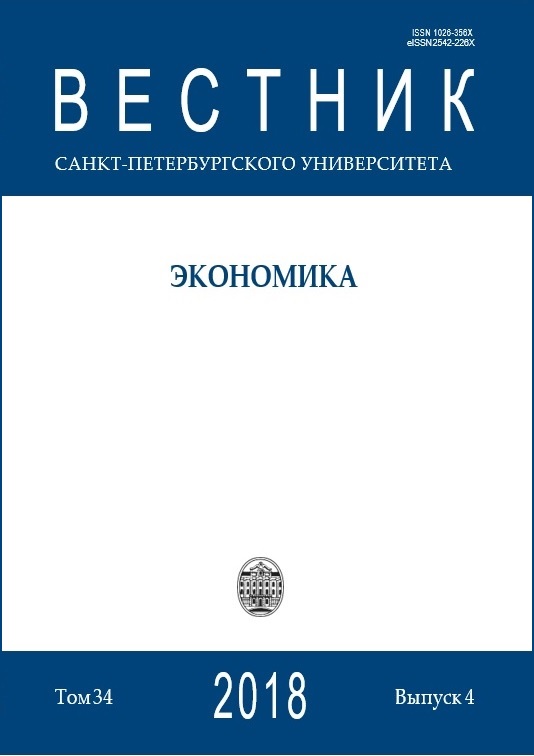Измерение инфляционных ожиданий: традиционные и новаторские подходы
DOI:
https://doi.org/10.21638/spbu05.2018.403Аннотация
В статье рассматриваются особенности четырех методов измерения и оценки инфляционных ожиданий: социологических опросов; биржевых индикаторов; эконометрических (математических) моделей; методов исследования больших данных (BD-технологии). Их сосуществование является следствием двух тенденций последних десятилетий: наличия двух линий развития экономического инструментария, связанных с разработкой и модификацией традиционных методов и созданием совершенно новых аналитических подходов по обработке больших данных («Big Data»), и превращения экономики в инженерную (техническую) науку с присущей ей проблемой инструментального плюрализма. В рамках социологических опросов рассмотрены три группы респондентов — население, предприниматели и финансисты-эксперты. Отмечается проблема координации и агрегирования ожиданий трех групп респондентов; анализируется задача перевода качественных оценок в количественные данные; указаны способы преодоления этой проблемы с помощью вероятностного, регрессионного, балансового и логистического методов; отмечены преимущества и недостатки каждого из четырех подходов. Рассмотрены эконометрические модели, включающие в себя три разновидности — концепции «назадсмотрящих» и «впередсмотрящих» инфляционных ожиданий, а также концепцию кривой Филлипса. Обосновывается, что для эконометрических моделей характерны крайне низкая восприимчивость «черных лебедей» и примитивность представления механизма формирования инфляционных ожиданий,что делает данный подход наименее перспективным. В числе новейших методов измерения инфляционных ожиданий рассмотрены BD-технологии, которые используют оперативные данные интернетсреды и социальных сетей. Сделан вывод, что данный класс методов является самым перспективным и в будущем способен по своей значимости и популярности выйти на первое место. Аргументируется тезис о грядущей рокировке популярности четырех типов методов оценки инфляционных ожиданий.
Ключевые слова:
инфляция, инфляционные ожидания, социологическое исследование, эконометрика, большие данные, биржевой индекс
Скачивания
Библиографические ссылки
Translation of references in Russian into English
Загрузки
Опубликован
Как цитировать
Выпуск
Раздел
Лицензия
Статьи журнала «Вестник Санкт-Петербургского университета. Экономика» находятся в открытом доступе и распространяются в соответствии с условиями Лицензионного Договора с Санкт-Петербургским государственным университетом, который бесплатно предоставляет авторам неограниченное распространение и самостоятельное архивирование.







